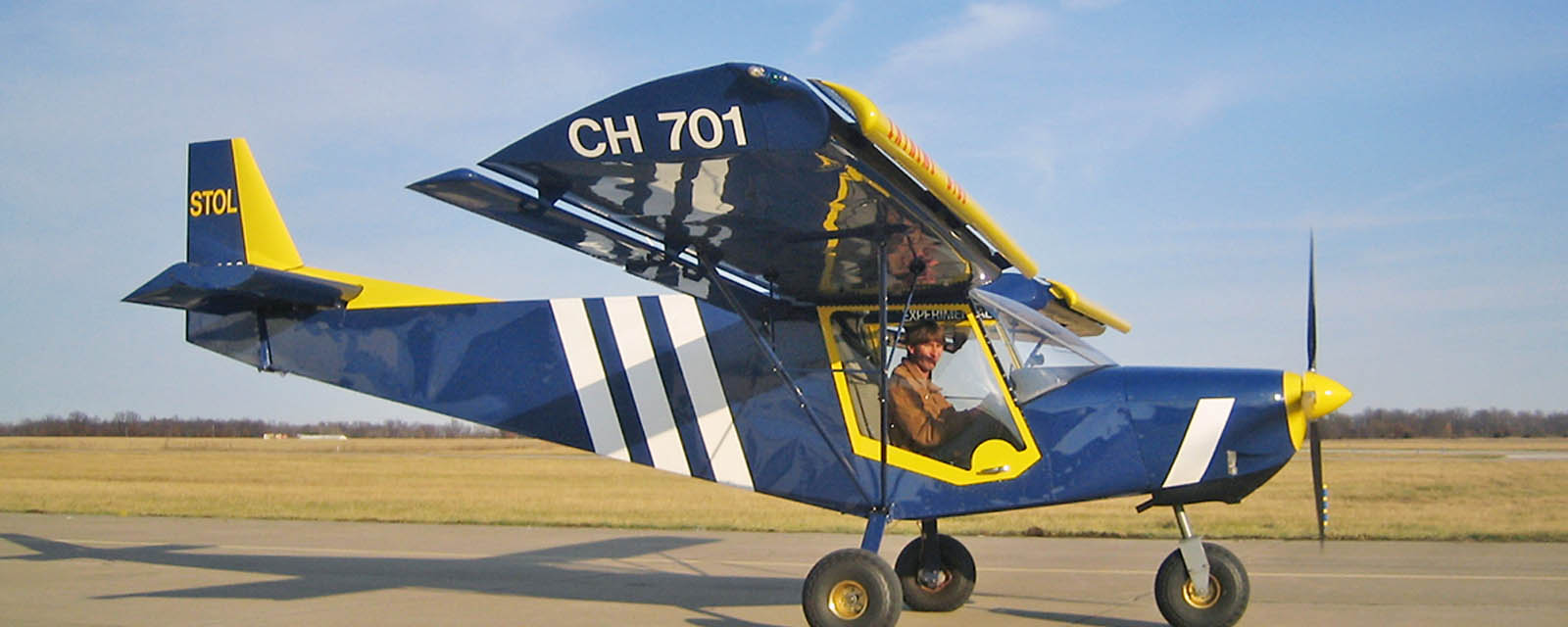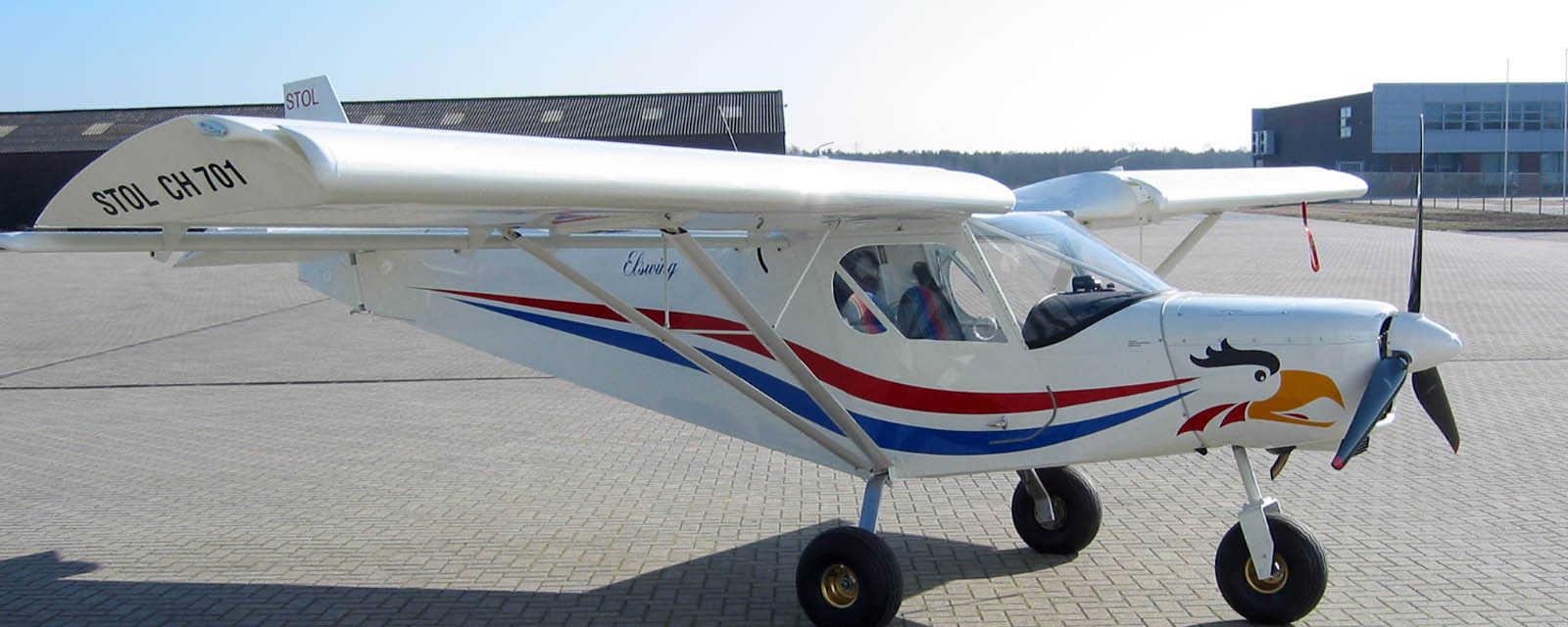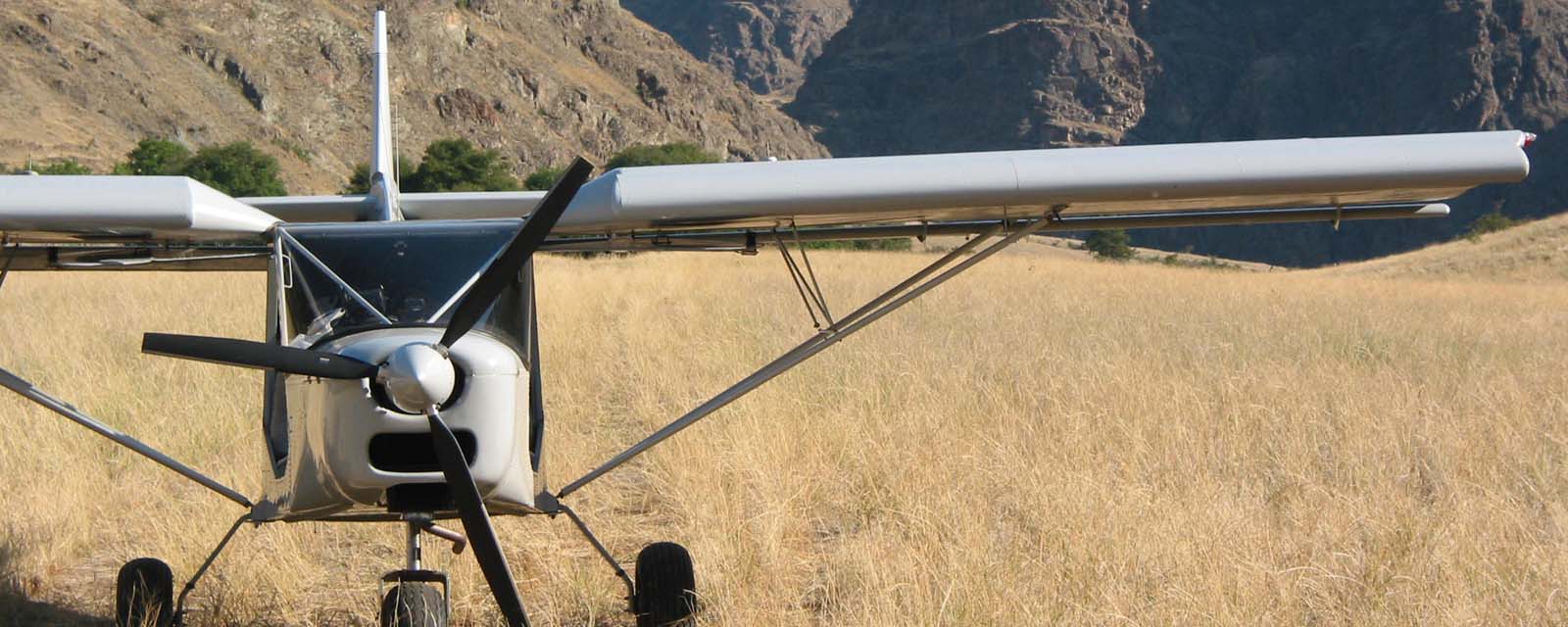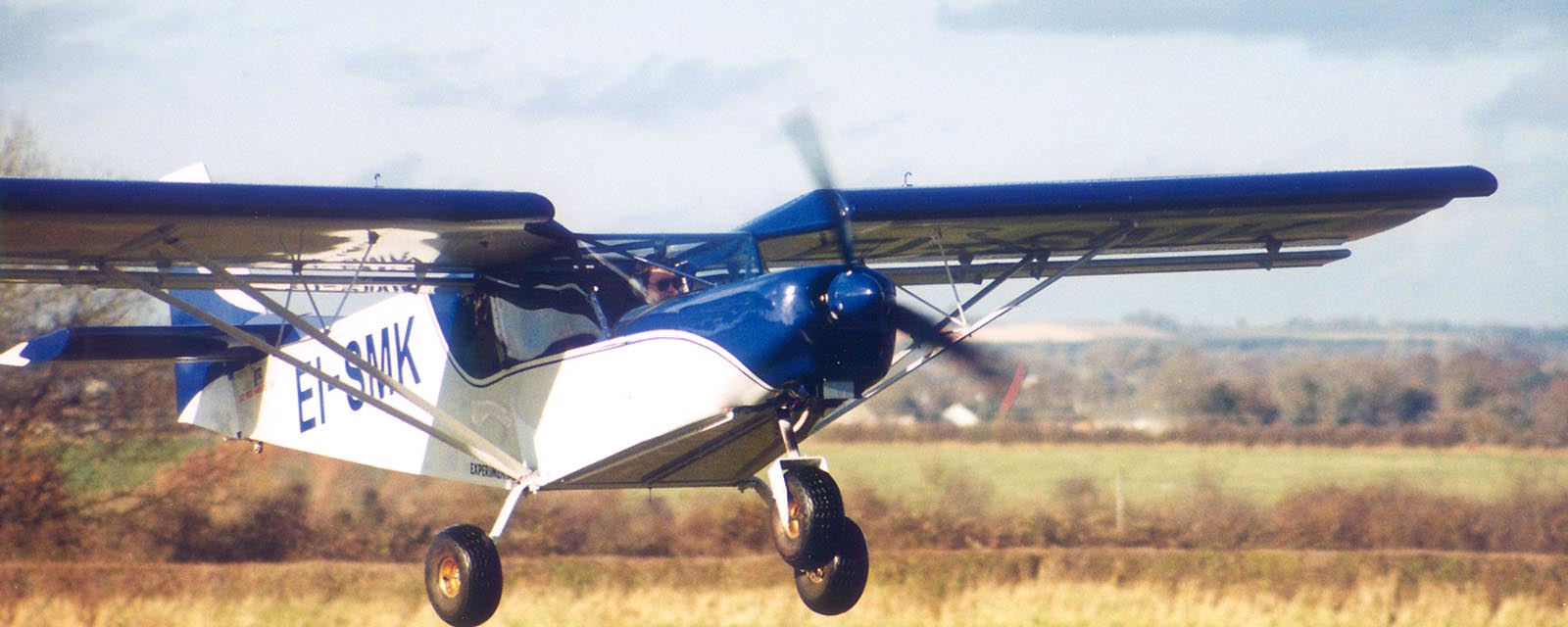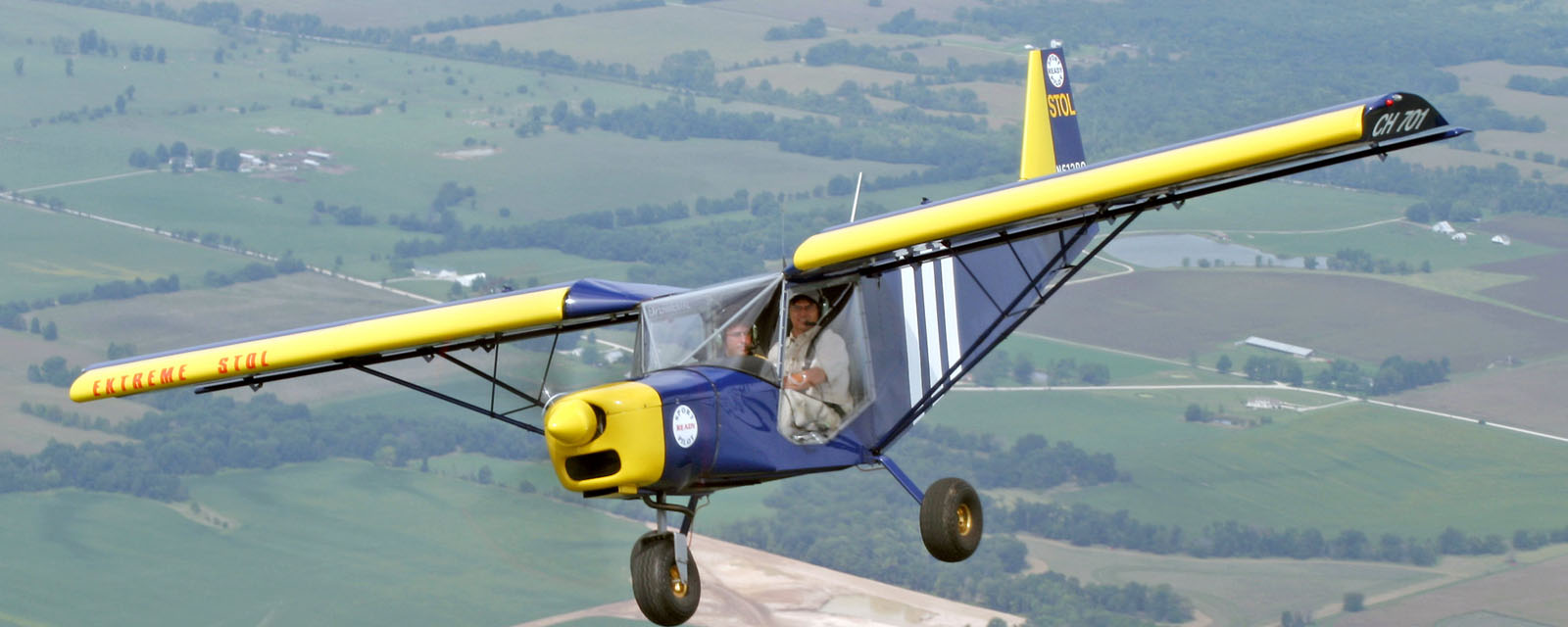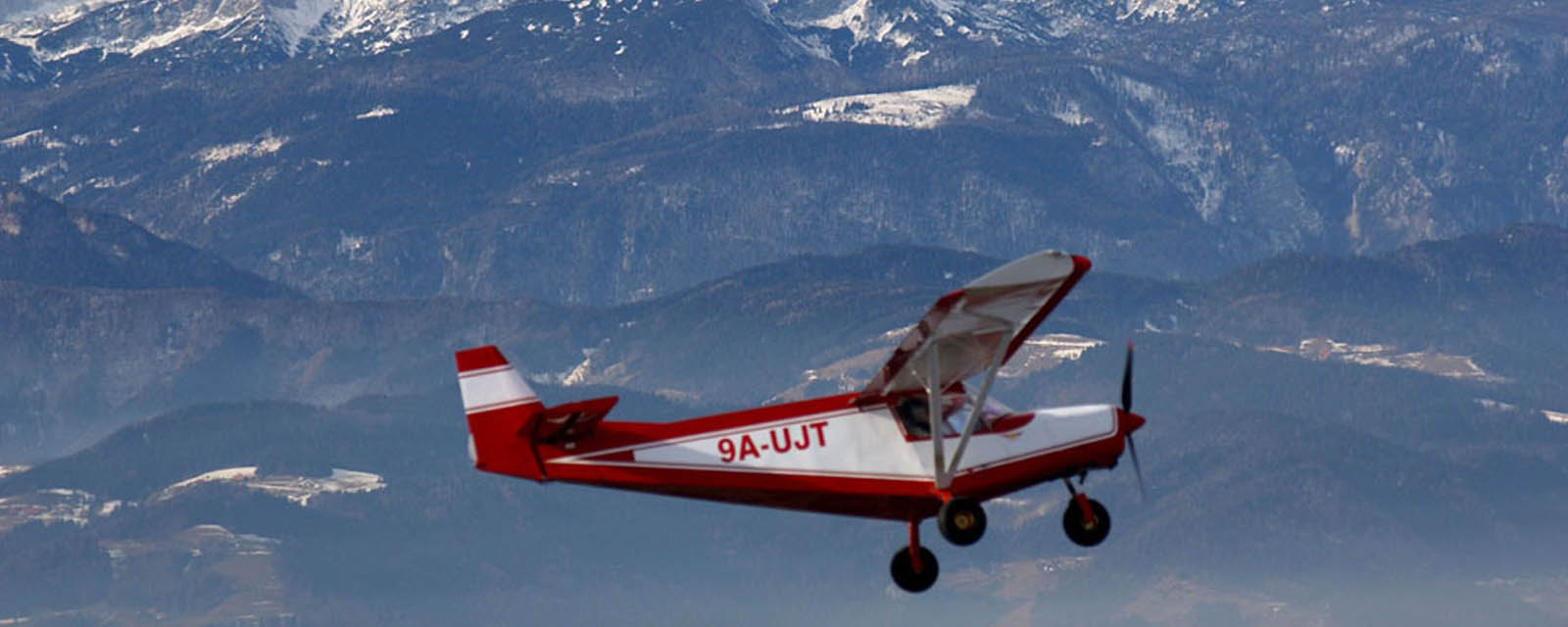“Thanks to its thick, high-lift wing, full-span flaperons and fixed, full-span leading-edge slats, the 701 needs little more runway space than the typical backyard with clear access at the ends. Because of its stellar short-field capabilities, the 701 stands as one of the few kitplanes to serve in the sort of serious utility roles usually reserved for larger airplanes such as the Helio Courier, Piper Super Cub, Maule or Aviat Husky. That includes missionary and utility work in third world countries as well as cattle herding, fence patrol and crop dusting.” – KITPLANES magazine, January 2004
“Chris Heintz designed the CH701 some twenty years ago and it has proven itself all around the world. When the only runway is a cleared patch in the jungle, and the alternative is a week of hiking through snake-infected swamps, the 701 starts to look pretty good. This is a plane that can use almost any clearing as a runway, and its high angle of climb means that you won’t hit the trees at the end of the strip. A football field is plenty enough airstrip for a 701.” – Recreational Flyer (Canada), May/June 2005: “STOL for the people: Zenith’s amazing CH 701,” cover story by Gary Wolf and Mary Mills, pages 4 – 10.

“Well over 500 STOL CH 701s are already flying on all continents, mostly in off airport environments: Missionary work in Tanzania and Zambia, anti-poaching patrols in Ghana, doctors in northern Thailand, flying training in India. The STOL CH 701 stands as one of the few light planes to serve in the sort of serious utility roles usually reserved for larger airplanes such as the Helio Courier, Piper Super Cub, Maule or Aviat Husky. Its stellar short field capabilities and slow flying characteristics make it ideal for any bush or farm operation: herding, surveying, patrolling and protection services.” – African Pilot magazine (South Africa), June 2005 issue, pages 53 – 56, by Athol Franz
“This aircraft is great fun to fly. The Skyjeep would be an ideal item of equipment for any farmer with substantial acreage. Moreover, the design is very well suited to many aerial work requirements where short field performance and a good view are required.” – SA Flyer magazine (South Africa), April 2005 issue cover story.

“Even though it is only handsome in the way of a Hummer, the CH 701 enjoys a good reputation for its durability and outstanding STOL performance.”
“With big tires and lots of lift-enhancing devices, the Zenair CH-701 is a great backwoods aircraft on wheels, floats, or skis as Grant Rappe demonstrates.”
“Our takeoff roll was absolutely unbelievable. The only two other aircraft that I can think of that possibly could take off shorter would be a helicopter or Wayne Handley’s Turbo Raven. With a high nose pitch, the STOL CH 701 literally climbed out with two adults and full fuel at 1,000 feet per minute with about 100 feet of ground roll, breaking ground approaching 30 knots indicated airspeed!”
“The truest gauge by which to measure the quality of a kit and its kit manufacturing company are the number of its satisfied customers, the fine flying characteristics of all its finished aircraft, and the dedicated after-purchase support provided by the factory.
“By all these standards and many others too numerous to mention, Zenith Aircraft Company’s excellent reputation is well deserved. We heartily recommend to every prospective homebuilt kit buyer that he or she seriously consider the excellent aircraft produced by Zenair, a company we’ve always found to be competently and professionally managed by genuinely qualified, dedicated people.” – Norm Goyer, editor, Sport Pilot magazine (July 1993)
“With its slotted leading edges and a clear sun roof, the CH 701 makes for a good turning “ag plane. It’s not really an ag plane, per se. But it sure has a place in an ag operation. I really liked the CH701-AG… affordable to own and operate. Flying over the corn at 100 mph, making 30-second or less safe turns, an exceptional climb rate and short takeoff and landing capability, deems the 701 a viable aircraft for many spraying operations.” – Bill Lavender, Editor, AgAir Update, October 1999, pages 28 – 30.

By Mike Watson (Reprinted from Australian Ultralights, October/November 1998)
There is a new aeroplane in town that has a short, square fuselage, short, chubby wings, a sturdy set of wheels and a handsome set of bright green slats that the Fat Controller said he can keep to help him to get out of short strips.
Mandy, who took these photographs says that he reminds her of Thomas the Tank engine, who fusses around the yard, pushing, pulling, and getting everything else organized.
This is the Zenith STOL 701. Built by Max Stewart in Alice Springs with a Rotax 912 engine and a 3 blade wooden prop, its construction is of conventional metal semi monocoque, held together with aeroplane type pop rivets. The suppliers claim a build time of less than 400 hours and Max built his in around 325 hours with a fairly well equipped tool shed.
It fits comfortably into the old ultralight weight category with 2 large-ish people and some fuel. As I’m 6ft 7 inches tall I appreciate the size of the doors which go a long way forward so that getting in and out is a breeze and also by the size of the cabin which is quite high and wide enough for me to sit up straight in.
In the centre of the two seat side by side cabin there is one sidestick with a Y shaped top, so that there is no need for 2 crew to hold hands, (like in a Jabiru). There is also a massive ‘hat rack’ behind the seats, which, although it will not hold a large weight, should be OK for a couple of sleeping bags and toothbrushes.
I have been lucky enough to be asked to help in the test flying for a VH registration and I have had my opinions transformed in the process. To put it simply, aeroplanes just shouldn’t do what this one does, dammit!
The wing has full length trailing flapperons, like a Skyfox, however washout is built into the control surfaces instead of the wing itself.
The control forces are reasonably firm when cruising at normal speeds of 50Kt or more, and the forces are nicely balanced. The rate of roll can be very high, (I haven’t measured it) due to the very powerful control surfaces. The tailplane does look a little odd at first sight, as the upper surface is flat with an unusually large bulge on the under surface to make sure that there is enough aerodynamic control force to get those high angles of attack for fun take offs and landings.
At lower speeds however, the forces are light and the pitch input on the control stick takes quite a lot of movement to get the high nose attitudes required if you want a short landing. You also have to be careful not to whack the tail on the ground on takeoff if you pull back too hard on the joystick before the airspeed is high enough.
When flying slowly with reduced power, more rudder input is also required due to the reduced directional stability, however the fully flying fin has been made from a high lift aerofoil section, so that there is more than enough rudder authority to cope with directional control at all speeds.
The flaperons have 3 positions, however I find that the first 2 are more than enough for anyone. When the flaps are retracted, the STOL will cruise at a comfortable 75 knots, however, when the first stage of flap is extended, things start to become a little ridiculous.
I went out and measured a short takeoff distance, at an elevation of 2500ft, on a 22 degree day (a density height of 3700ft), with only me (at 82 kg), and 40 litres of fuel: the take off run was FOURTEEN METRES with no wind!!
Climb out with this flap setting is at 31 knots, giving close on 1000 fpm climb rate. As this is also the stall speed with flaps retracted, I tend to speed up to 41 knots before retracting flap.
If I want to really show off in a 25 Kt. wind, I can put the brakes hard on, apply power, raise the nose and take off without the wheels even rotating, however I’ve noticed that this causes other pilots to get a little upset and mutter the odd expletive, whilst helicopter drivers take to the bottle and go back to riding horses. Aah well, who wants sympathy anyway?
So how does the STOL fly? Well, apart from giving helicopters a fright, the handsome green full-length slats mean that the stalling angle of attack is somewhere around 30 degrees and flying straight and level with such a high nose attitude takes a bit of getting used to! When flying that slowly, the bite on the controls isn’t nearly as effective as when flying at more “normal” speeds. However since all the flying surfaces on the tailplane are high lift aerofoil sections, you can still make the STOL do all the silly things it is capable of.
There is a small elevator trim tab, which is operated electrically, however the control forces are sufficiently light that I only tend to use it when in the cruise: it simply isn’t necessary otherwise when you play with the dramatic changes in speed which are available!
When descending, the glide angle is quite good, similar to a Cessna 172, showing that this is a low drag airframe and although you can reduce the speed to something very slow before actually touching the ground before landing, an exceptionally steep descent is not available as the gliding characteristics are simply too good.
It is also not a good idea to do a glide approach with full flap, as the high angle of incidence means that it is difficult to get the nose up enough to land on the main wheels only. I haven’t explored this fully, but I think that the best bet for short landings is to use only the first stage of flap.
The flap control is on the floor beneath your feet which makes it a bit awkward for rapid application but it also means that it is effectively impossible to extend the flap at speeds greater than Vfe as the forces on the flap control are too great (I have no idea if this is deliberate, or not).
The landing is simplicity itself, using a robust tricycle undercarriage. The main suspension is made up of a leaf spring going right across the bottom of the fuselage with 2 upside down U shaped sections and the wheels mounted in the sections. You can buy beefed up U sections, so I guess that they have been bent in cross wind landings in the past, however I’ve had no problems and I think that with normal use, the original fit should be OK.
The nose wheel is suspended with bungees behind the engine, which are cheap and effective. If I was going into rufty tufty strips I would be concerned about things being thrown up from the nose wheel into the radiator, and I might consider some type of mudguard on the nose wheel to protect the radiator.
Is this little aircraft destined for a niche in Australia? I think definitely yes: It is a bit like the Kitfox, in that most people get out of those with a silly grin the first time as well: the reasons in this case are quite different, but, like the Kitfox, it is also simply a delight to fly. I would not be at all surprised to see these aircraft operating in the bush a lot in the future, for their ease of use and maintenance, their ease of flying, and their ability to get in and out of ridiculous places. They will make a great little workhorse.
They have the advantage in being a tricycle undercarriage that more pilots can fly them and that if they are left in a wind, they are much less likely to blow over.
If you ever get the chance to have a fly in one of these aircraft, DO take up the offer! It is simply great fun to fly.
